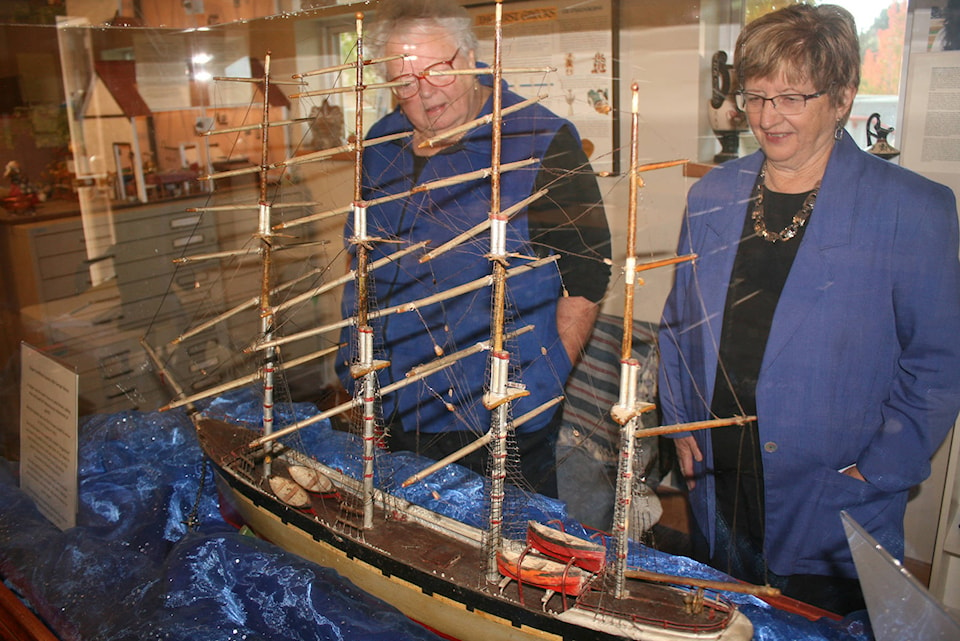The vessel depicted in the photograph in the Jan. 31 article, Museum traces roots of Victoria’s earliest Greek settlers, is a four masted barque – square yards on the fore, main and mizzen (square to the keel) and fore and aft spars on the jigger. The vessel was rigged with double topsail and double topgallant yards (note the extended mast doublings) with royal and skysail yards above.
Her jigger mast is rigged with lower spanker boom, and upper spanker boom from which a gaff topsail could be set. The spar above mat have been a flag staff or for a trapezoidal gaff topsail. The double topsails were introduced into service by American captain RB Forbes in the early 1850s. The American clipper Great Republic, 1853, is reportedly the first vessel to incorporate the design. HDO Cunningham of Great Britain made improvements to the plan for safety and speed by patenting a mode of reefing the topsails from the deck. Men still were required to go aloft to do the actual furling The system of double topgallants based on the divided topsail improvements was introduced sometime in the early 1870s.
Her use of royals and skysails is interesting in that these “kites” could only be used in light to medium winds. Since the cargos carried were usually bulk – grain, guano, coal, etc.- and not time sensitive were probably not worth the manpower to set them. A number of vessels such as Lawhill struck the royal mast permanently and sailed “baldheaded”
The vessel bowsprit is a single spike. Although the lower masts have decorative robands (rope-bands) indicating wooden made masts they like the spike bowsprit may have been steel fabricated.
The vessel herself was probably of iron or steel construction.
The four masted barque was the standard rig for big ships of the late 19th century. They could be as long or longer than a football fields with a carrying capacity of 5,000 tons by volume. The great expanse of deck, and high bulwarks, uninterrupted by any deck houses would have shipped a lot of water in a storm endangering hatch covers and the men working the ship, regardless of the number of freeing ports installed.
Some interesting features are her curved whaleback stern counter, her unprotected wheel and binnacle in one piece, and her painted lifeboats on skids The two lifeboats just aft of the fore mast were most probably on skids as well to keep the decks clear to work the ship. Her livery (paint scheme) with the painted ports is sometimes referred to as Blackwall fashion, or the vessel as a Blackwall frigate.
With the name of the vessel, readers could consult the Lloyd’s Register at the CFB Esquimalt Naval & Military Museum.
Richard Mackenzie
Saanich
